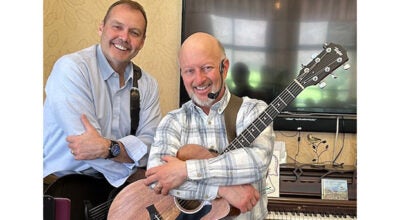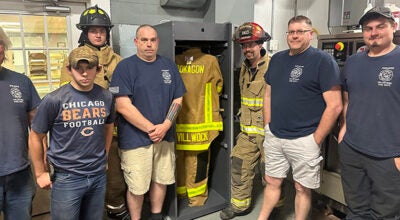Area museums provide online content for students, residents
Published 9:01 am Thursday, March 26, 2020
|
Getting your Trinity Audio player ready...
|
SOUTHWEST MICHIGAN — Statewide mandates have closed nonessential business and schools throughout the state in response to the threat posed by the coronavirus outbreak. While schools are closed, this means many spring field trips have been delayed, and parents and educators are working to continue learning from home.
To help fill the absence, area Niles and Dowagiac history museums have stepped up to take students on field trips through their exhibits — virtually.
The Niles History Center and the Dowagiac Area History Museum have posted resources for parents and students to use while the schools are closed. Christina Arseneau, director of the Niles History Center, and Steve Arseneau, director of the Dowagiac Area History Museum, have both taken their own unique approach to presenting the information for students.
The Niles History Center has filmed and posted short videos stocked with information about Niles history to the museum’s Facebook and YouTube accounts. Each video brings viewers to a portion of the museum. The first video features Christina. She gives a short education on Fort St. Joseph, which was in built in Niles in 1691 by the French. The history is specific to the area and presents parts of the display that students might find the most interesting.
The second mini field trip features Molly Watson, assistant director from the Niles History Center, speaking about local artist, suffragist and civil rights activist Lottie Wilson. She describes Wilson’s work throughout her life and achievements, and features a piece of her artwork as she highlights her connections to the area.
According to Christina, the videos have been shared around quite a bit. The first video posted on Facebook has been shared 64 times, and viewed 245 times on YouTube, as of Wednesday afternoon.
“I’ve been emailing with teachers who normally do field trips with us in the spring who are kind of excited about [the videos], because they don’t know if they will be able to do field trips in the spring,” she said. “We usually start at the end of April, and the end of May is the end of busy field trip season.”
The museum had prepared a bit before the mandates, as staff anticipated them coming.
“We scanned quite a few historic pictures, and we are coming up with a plan, posting something with little tidbits about Niles history every day,” she said.
Just a 20-minute drive away, Christina’s husband, Steve Arseneau, director of the Dowagiac Area History Museum, has taken a different approach. His resources guide viewers through an introduction of two exhibits at the Dowagiac Area History Museum.
“I wanted to get something up there for parents to be able to access as they are trying to home school their kids, and one thing that I thought to offer two field trips that we have been offering for years,” Steve said.
“The Underground Railroad in Michigan” and an exhibit called “Keepers of the Fire: The Potawatomi” are the two offerings at the moment. Steve has gone a different route than a video and has made informational slideshows using PowerPoint, so that students, parents and educators can read through the information.
The presentations are a summary of the introduction that Steve usually presents for students visiting the museum.
“It usually goes about 20 minutes to half an hour, depending on how many questions students have, so I have the Power Points with the basic information, and was just able to put those up and out there so parents could access the information,” Steve said.
The two presentations from the Dowagiac Area History Museum are written with second to fifth graders in mind, but are posted for anyone to learn and enjoy. The Underground Railroad exhibit is typically visited by area fourth and fifth grade classes, while the Potowatomi exhibit is most frequented by third grade classes in the area.
Both museum directors are looking ahead at what else they can do during these uncertain times.
“We want to provide something for people, virtual content,” Christina said. “We don’t know how long-term this will affect us, but we are hoping that this online content will drive visitors to us when we are able to travel again. It’s hard for us to do research. We are used to being able to engage much more closely with the public, but we are figuring it out.”
Steve is hoping to have a timeline of Dowagiac history done in the coming weeks.
“That’s one of my home projects,” he said. “The initial goal was to get the second-grade kids into the museum, but I’m guessing that’s not going to happen this [school] year.”
Steve invited parents to email the museum with any questions they or their children came up with as they worked through the presentations, mirroring the Niles History Center’s routine in working with the public.







